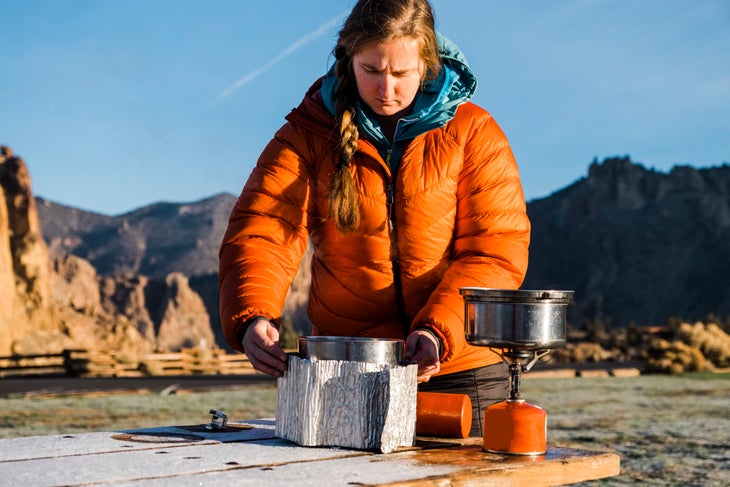Products You May Like
Get full access to Outside Learn, our online education hub featuring in-depth fitness, nutrition, and adventure courses and more than 2,000 instructional videos when you sign up for Outside+
Sign up for Outside+ today.
Whether from sneaking some kindling into the perfect spot, juggling a pot of boiling hot ramen, or the old trip-and-fall-into-the-fire trick, backpackers are at risk of painful or even dangerous burns. Treatment includes wound care and pain control, but prevention matters most.
In 2017, researchers analyzed data from more than 25 years of NOLS expeditions and found that burns accounted for nine percent of skin and soft tissue injuries. Most burns happened in the camp kitchen, and two thirds were specifically related to spilled boiling water. Thankfully, only one injury was attributed to “temporary loss of vision from hot butter splashed in the eyes while making a calzone.”
The best approach to treatment? First off, stop the burning—while making sure that no one else gets burned in the process. Remove smoldering clothes or ashes, and irrigate away substances still in contact with the skin like hot oil or scalding mac and cheese. Next, immersing the injury site in cool (not ice cold) water might help reduce the extent of the burn while providing some pain relief.
Superficial burns that affect only the outer layer of skin can be gently cleansed with filtered water, then treated with cool moist dressings and antibiotic ointment. These injuries look and feel like sunburn, with red, tender skin but no blisters. Some evidence suggests that agents like honey or aloe can help to speed healing. The burn creams or ointments found in commercial first aid kits may include some combination of these ingredients, but they don’t offer any improvement over them. The triple antibiotic ointment already in your backcountry medical kit works just fine.

Deeper burns—blistering partial-thickness wounds that extend beyond the epidermis, or full-thickness burns that extend to deep structures—can be treated similarly in the backcountry, but pain alone may warrant a quick evacuation. Partial thickness and full thickness burns are measured by the amount of body surface area they cover: An area the size of the patient’s palm roughly corresponds to one percent of the total body surface. More severe burns (approaching 10 percent of body surface area) place patients at greater risk for infection.
Injuries involving sensitive areas like the hands, face, or groin may mandate evacuation regardless of size. And any burn that completely encircles an extremity, like around a wrist or an ankle, warrants urgent medical attention. Burns can be very painful; use pain medication liberally and keep the patient well-hydrated during the evacuation.
Avoiding burns can be far easier than treating them or hastily heading home for an ER visit. As one of my backcountry mentors has reminded me hundreds of times, that means setting that empty mug down before filling it with scalding hot chocolate. Pack a potholder or oven mitt for outdoor cooking, and avoid horseplay around the campfire. When cooking, squat in front of the stove instead of sitting so you can jump away in the event of a spill. Eye protection while calzone-making remains optional.
